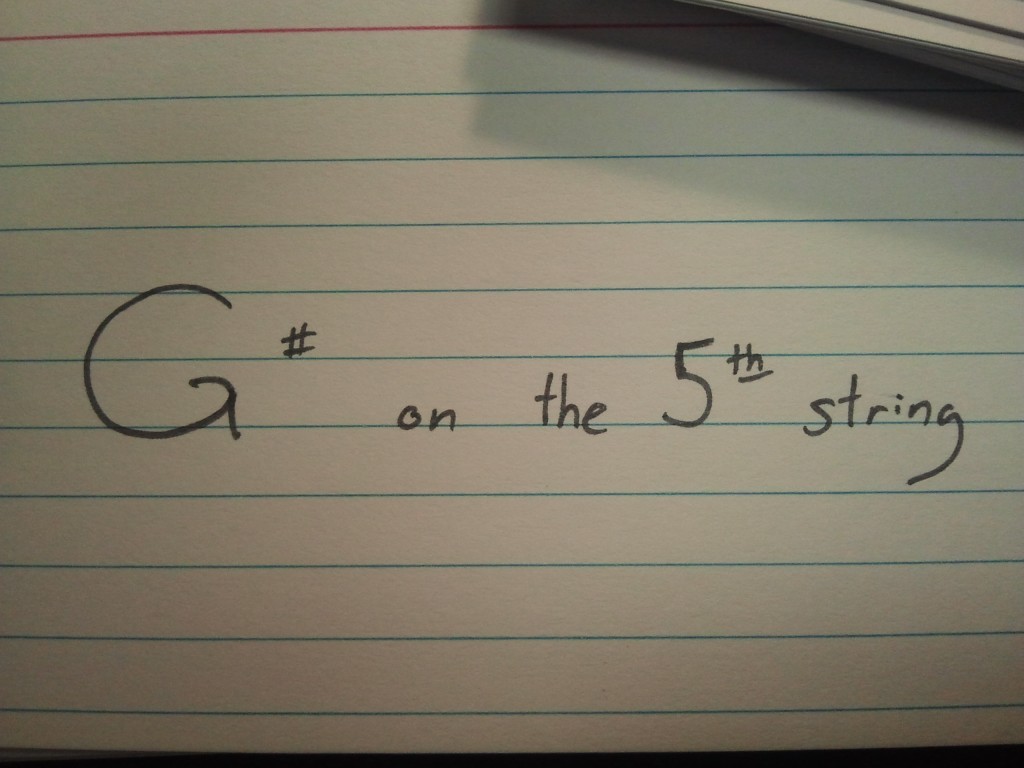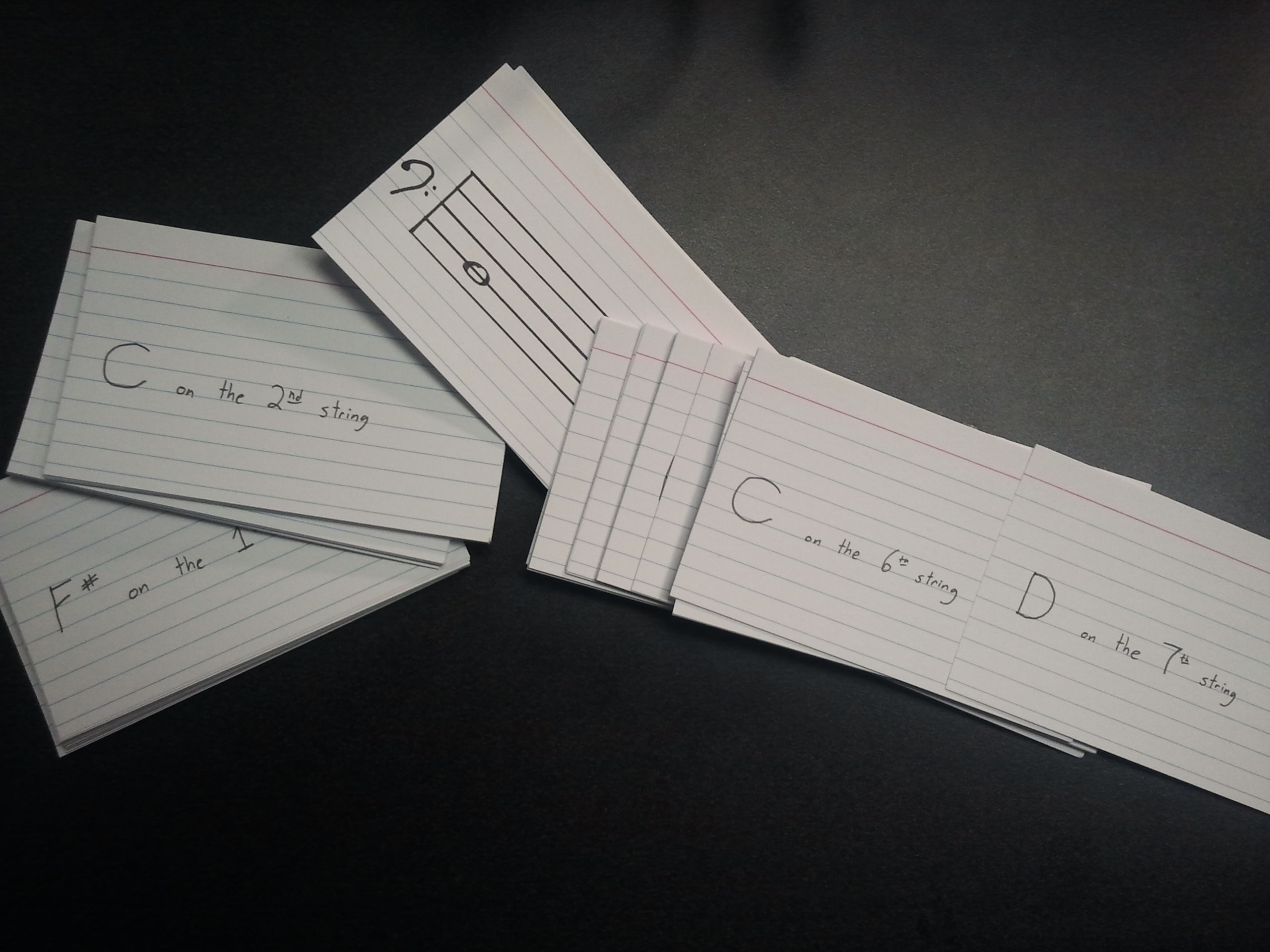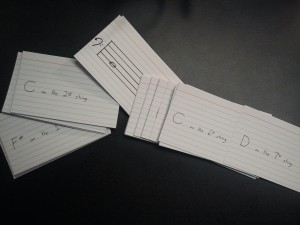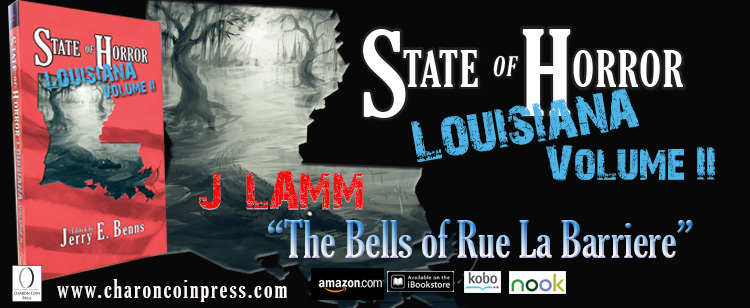Ugh, am I serious? Music Flash cards? Look, there are a shit load of guitarists and bass players out there that don’t know their way around their instruments very well. Ask them where the C# is at on their 4th string and they’ll look at their guitar neck and do the octave dance. “Okay, if this is the C down here than the…octave is right here…then move it up a step here….okay, here it is.” There are even more that can’t read music. Personally, I’m a guy that can read music but I’m really terrible at sight reading. So one of the things I’m trying to better myself at is not only being able to sight read quicker but to learn where all the notes are at on my 7-string bass neck at a glance. I do this by using flash cards that I made for myself. But I also went beyond what I just mentioned.
 Hey, tablature is great, right? Those numbers representing the frets on the lines representing the strings. Fantastic! But, for me, most jazz, classical, and world music musical notation is a non-tab world.
Hey, tablature is great, right? Those numbers representing the frets on the lines representing the strings. Fantastic! But, for me, most jazz, classical, and world music musical notation is a non-tab world.
Lucky for me I know how to read music. But it’s a slow process for me. I have to actually break out a pencil and right out the note names above the notes because my sight reading skills suck. If that’s not bad enough the guitar neck isn’t as visual as a piano. On a piano it’s super easy to see where the C is at. On a guitar it’s a different story. The best we have a those little pearl inlays that let us know where the 3rd, 5th, etc. frets are at. Then when you add in alternate tunings things can get very complicated.
Typically when I’m reading music I can pretty much easily find what I’m looking for on my lower strings. I know where G is at on the third fret, I know where the A is at the 5th fret. It’s easy. I’m used to that stuff. But if you were to ask me where the D# is at on the higher strings on my 7-string bass I’m going to have to do the ole octave trick to find where I’m at.
Then I saw an instructional home video with Jaco Pastorious. He said that when he was learning the bass his teacher would quiz him on things like, “show me the F on your 2nd string….show me where the B is at on your 3rd string now.”
By doing this he was able to learn his fretboard a lot better.
Man, I’ve gotta do that too, I thought.
So I started off by making some flash cards for my 7-string bass. They basically look like this:

Every note for every string.
But I didn’t stop there. I made a card for all seven strings and then I went ahead and made a bass clef and treble clef with one note on each bar or space so I can quiz myself on what note I’m looking at. I gotta get better at sight reading, you know.
And then I went one further and made a flash card for all the different types of musical notes, rests, and phrases so when I come across them in a score I’ll know how to articulate the musical phrasing. I have this fear that one day I’ll have a job and someone will hand me sheet music and expect me to churn it out on the spot. I gotta lessen that anxiety.
I just bought a pack of index cards and spent hours and hours making my own musical flash cards.
Yes, I know I’m a dork by doing this but soon I’ll be able to sight read better and be better versed at where all those notes are at on my big thick 7-string neck without having to look at it like a dog hearing a high pitched whistle.





